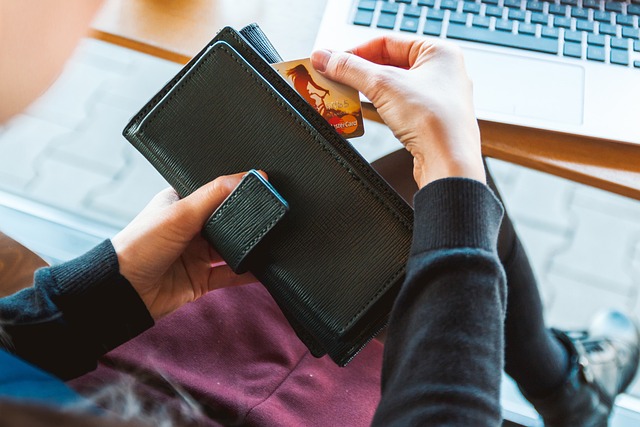Payment processing demystified: Navigating the landscape of financial transactions
In the digital age, the world of financial transactions has undergone a profound transformation. From online shopping to global money transfers, payment processing plays a pivotal role in enabling the seamless movement of funds. However, beneath the surface lies a complex landscape of technologies, networks, and security measures that facilitate these transactions.

This article delves into the intricacies of payment processing, exploring its components, challenges, and the evolving landscape that shapes how we conduct financial transactions.
Understanding the ecosystem: Key players and processes
Payment processing involves interconnected players and processes facilitating funds transfer between individuals, businesses, and financial institutions. At its core, payment processing includes several essential steps:
Authorization: When a customer initiates a transaction, the payment processor first verifies the validity of the payment method and whether the funds are available. This step ensures that the transaction can proceed securely.
Authentication: To prevent fraudulent transactions, authentication measures are employed. This may involve requesting a secure PIN, using biometric authentication like fingerprints or facial recognition, or utilizing two-factor authentication.
Clearing: Once a transaction is authorized and authenticated, it enters the clearing phase. During this stage, the payment processor coordinates with the relevant financial institutions to confirm the funds are available for transfer.
Settlement: In the settlement phase, the actual transfer of funds occurs. The payment processor ensures the appropriate accounts are debited and credited, finalizing the transaction.
Security measures: Payment processors employ various security measures to protect sensitive financial data. This includes encryption, tokenization, and fraud detection systems that monitor transactions for unusual activity.
Challenges in payment processing: Speed, security, and compliance
While payment processing has become more efficient and convenient, it has. One of the critical challenges is striking a balance between speed and security. Consumers expect near-instant transactions, but maintaining robust security measures is crucial to prevent fraud and unauthorized access.
The rise of digital payment methods has increased the risk of cyberattacks and data breaches. Hackers target payment processors to gain access to sensitive financial information, posing a significant threat to both consumers and businesses. As a result, payment processors must invest heavily in cybersecurity measures to safeguard their systems and the data they handle.
Ensuring compliance with regulatory requirements is yet another challenge in payment processing. Different countries and regions have varying regulations related to data privacy, money laundering, and financial transactions. Payment processors must navigate this complex landscape to operate within legal boundaries while maintaining a seamless user experience.
Emerging trends: Contactless payments, cryptocurrencies, and beyond
The payment processing landscape continuously evolves, driven by technological advancements and changing consumer preferences. One prominent trend is the rise of contactless payments. With the advent of near-field communication (NFC) technology, consumers can make payments simply by tapping their cards or mobile devices on a payment terminal. Contactless payments offer convenience and speed, reducing the need for physical cash or card insertion.
Cryptocurrencies have also made their mark on the payment processing landscape. While still considered relatively niche, cryptocurrencies like Bitcoin and Ethereum have gained attention as alternative forms of payment. Some businesses accept cryptocurrencies as a payment method, and payment processors are exploring ways to integrate these digital currencies into their platforms.
The concept of open banking is reshaping how payment processing works. Open banking allows third-party developers to create applications and services that can access users’ financial data with their consent. This enables innovative solutions for managing finances and making payments, ultimately enhancing the user experience.
Enhancing user experience: Seamless integration and innovation
In pursuing a seamless user experience, payment processors constantly innovate and enhance their services. Integration with various platforms and devices has become a priority, allowing users to easily make payments across different channels. Mobile payment apps, for instance, enable consumers to link their credit or debit cards using their smartphones or wearable devices for utility payment processing and a range of other services. This level of convenience and accessibility streamlines transactions and caters to digitally savvy consumers’ preferences.
Furthermore, payment processors are exploring biometric authentication to enhance security and user experience. Biometric methods such as fingerprint recognition and facial scanning offer additional protection against unauthorized access. These authentication methods are secure and convenient, as users can authenticate transactions using their unique physiological features.
Innovation in payment processing also extends to small businesses and entrepreneurs. With the rise of e-commerce and online marketplaces, tools like digital wallets and payment gateways have empowered small-scale merchants to accept various payment methods. This democratization of payment processing allows businesses of all sizes to participate in the global economy and reach customers worldwide.
With that said
Payment processing is the engine that drives modern financial transactions, enabling individuals and businesses to move funds swiftly and securely. Understanding the key players, processes, challenges, and emerging trends is essential as we navigate the payment processing landscape.
While payment processing has become increasingly seamless and convenient, it’s essential to remain vigilant about security. Consumers should protect their financial data by using strong passwords, enabling multi-factor authentication, and monitoring their accounts for unusual activity. Businesses and payment processors must continue investing in cybersecurity measures to safeguard sensitive information.







